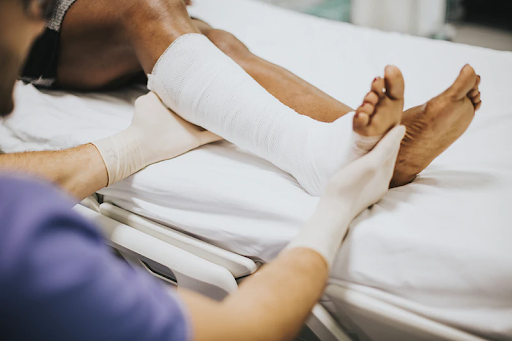

AFTERCARE OF A BURN PATIENT POST-HOSPITAL DISCHARGE

If you are planning an aftercare solution for a burn patient at home, this article will help. Discharge plans and decisions are taken during the hospital stay depending on the needs of the patient. Usually, the medical team will advise you to get in touch with a nursing facility for better care. Although these facilities have proven to improve the recovery rate, the same can be done by you without external intervention.
Firstly, you need a discharge plan to work on and your medical team will know what's best given the profile of the patient concerned. If you are the primary caregiver of the patient, then you will be instructed on exercises that will help your patient recover faster and build strength. Even though primary care can be provided at home, there will be a requirement to visit outpatient rehabilitationtherapy. So, you can anticipate more returns to the burn clinic for follow-ups and treatment.
This will be a stressful time for you and your patient - you also need to take into account your mental health issues. You must ask all the necessary questions to your primary healthcare provider.
Things you need to do to tend to a burn patient at home
You will need to watch out for infections. When the burn wound is healing, there’s a chance of bacteria triggering an infection. So, be wary if you see the following:
1. Fever
2. Swelling
3. Redness around the wound or burn
4. Warm or hot skin when touched
5. Foul smell
6. Added pain
If you see any of these, contact the clinic. This also calls for IV antibiotic treatment that means that your patient needs to stay in the hospital. Infections, when monitored and reported at an early stage, can be treated much easily - preventing damage to the patient's graft or donor site.
Now, you must be wondering what a graft and donor site is? A donor site is skin moved from a non-injured part of the patient's body to cover the wound or burn. The new skin attaches itself and helps in the healing process. Usually, the skin is taken from the back, belly, scalp, or thigh. The donor site(s) are covered with a dressing of choice. There are times when the dressing leaks and you'd need to replace and re-patch it. Don't panic, It is completely normal. It takes about 10 to 14 days for the donor site to heal. You will notice that the drainage will become less eventually.
The graft site is the area that was formerly wounded or incurred damage. With time, the color of the graft will change. Since the nerve endings suffered damage, the new skin will be more sensitive to cold and hot temperatures. It will initially look dark pink/pink/ purple and shiny depending on its healing process, the temperature of its environment, and time.
Everything that you need to know about aftercare
Once the graft and donor site heals, it is imperative that you apply unscented mineral oil or lotion several times throughout the day. This will help your patient find comfort if the skin itches. Simultaneously, the skin will be moist, soft, and will be more stretchy. The lotion will also prevent the skin from drying up - which will trigger peeling and you don’t want that happening to your patient.
Now, all you need to do is follow the instructions given by your healthcare professional. It usually takes 12 to 18 months for the scars to complete their healing cycle. The color and the feeling of the wound will also change. To make sure that the healing process remains undisturbed and smooth - follow these steps
1. Make sure that your patient follows their routine stretches
2. Splints and garments can be worn if that’s what your healthcare professional has prescribed.
3. You need to be aware of the temperature around your patient since both the graft and donor site will remain sensitive to cold-hot temperatures.
4. Your patient may experience overheating but that’s normal. Rest is fundamental regardless.
5. If the recovery phase stretches till winter, make sure your patient is kept warm with gloves and clothes.
6. Your patient needs to wear sunscreen lotion of SPF 30 or higher throughout the year.
7. A lot of fluids need to be taken and you need to monitor the intake. Reapply sunscreen to help the patient body slowly adjust to the temperature.
You must closely monitor the body and advise your patient to rest.
Wrapping Up
Diet, health, and exercises are to be followed up along with basic healthcare. If you want to know more about the care you are providing, feel free to contact your healthcare professional. But most importantly be patient and resilient throughout the recovery phase.














